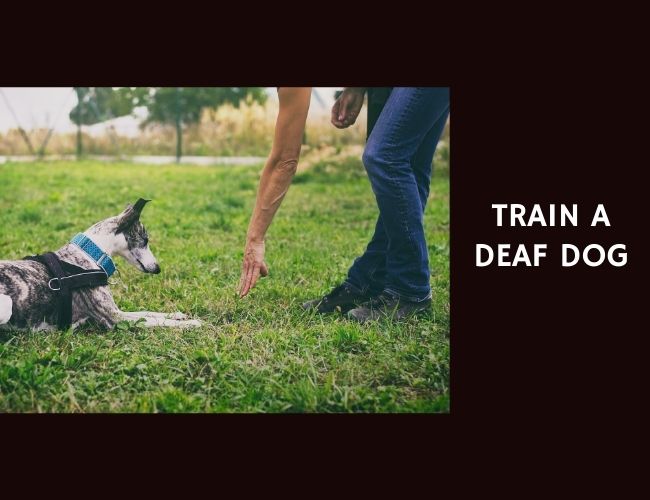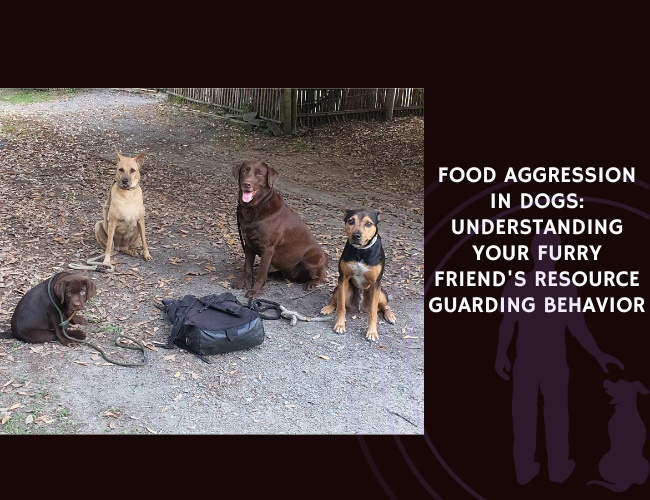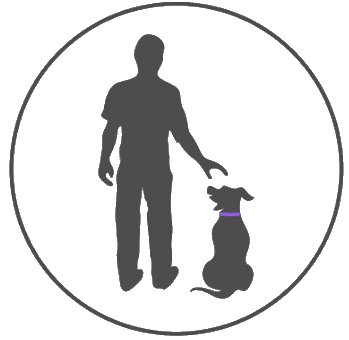Introduction to Canine Genetics and Behavior
Historical Perspective on Dog Domestication and Selective Breeding
Dogs and humans have shared a long history of interdependence, dating back thousands of years. The domestication of dogs (Canis familiaris) was a key milestone that occurred when wolves began to associate with human communities. Over time, humans selectively bred these early dogs for traits that made them suitable for various roles, such as hunting, guarding, and companionship. This selective breeding has significantly influenced the genetic makeup of modern dog breeds, cultivating specific physical and behavioral traits tailored to human needs. Such practices have created the diverse array of breeds we have today, each with unique characteristics shaped over millennia.
Importance of Understanding Genetic Influence on Behavior
To effectively train and manage dogs, it is crucial to recognize the role genetics play in shaping behavior. Genetic inheritance significantly impacts key behavioral traits, such as temperament, intelligence, and trainability. Specific genes have been identified that correlate with these traits, allowing us to understand how certain behaviors may be more prominent in some breeds due to their genetic background. This knowledge empowers dog owners and trainers to tailor their approaches based on the dog’s innate predispositions, enhancing training efficacy and fostering better human-dog relationships.
Overview of How Genetics Shapes Temperament, Intelligence, and Trainability
Selective breeding has not only molded physical attributes but also behavioral tendencies. For example, herding breeds like Border Collies exhibit high levels of intelligence and problem-solving capabilities, a direct result of selecting for these traits. Similarly, guard dogs such as German Shepherds have been cultivated for vigilance and protective behavior, traits essential for their roles. In contrast, companion breeds have been bred for sociability and a calm demeanor, making them well-suited for close human interaction. Understanding the genetic basis of these traits can:
- Help Tailor Training Programs: By knowing a dog’s genetic predisposition, training methods can be customized to harness the breed’s strengths and address potential challenges.
- Improve Behavior Management: Recognizing genetically influenced behaviors allows for better management strategies, reducing instances of problematic behaviors.
- Enhance Dog Welfare: Providing an environment that aligns with a dog’s natural tendencies promotes mental and physical well-being.
The domestication and selective breeding processes that have sculpted the canine genome underscore the importance of genetics in shaping a dog’s behavior. Appreciating this genetic influence helps provide a more knowledgeable approach to dog training and care.
As we move forward, the interaction between genetic predispositions and environmental factors will be vital in understanding how behavior is expressed. While genetics provides the blueprint, the surroundings and experiences each dog encounters play a significant role in shaping their behavioral outcomes.
Key Behavioral Genes and Their Functions
Understanding the genetic underpinnings of dog behavior can enhance our approach to training, behavior modification, and breed selection. This chapter delves into the roles of specific genes—DRD4, OXTR, MAOA, and SLC6A4—and how they influence key aspects of canine behavior such as attention, social bonding, aggression, and anxiety.
DRD4’s Role in Attention and Trainability
The Dopamine Receptor D4 gene (DRD4) is a crucial component in the dopamine signaling pathway, significantly affecting a dog’s attention span, impulsivity, and activity levels. Variants of DRD4 have been linked to differences in attention and trainability. For example, dogs with certain DRD4 variants may be more responsive to commands and easier to train, making this gene an important consideration for breeds typically employed in tasks requiring high levels of attention and obedience.
OXTR’s Influence on Social Bonding and Emotional Responses
The Oxytocin Receptor gene (OXTR) is central to social bonding and emotional responses in dogs. Variations in the OXTR gene affect how sociable a dog is with humans and other dogs, influencing their ability to form attachments and engage in social behaviors. Dogs with certain OXTR variants are often better at forming strong emotional bonds and exhibiting social behaviors, making them particularly suitable for roles that require high levels of human interaction, such as therapy and assistance dogs.
MAOA and SLC6A4’s Impact on Aggression and Anxiety
MAOA Gene
The Monoamine Oxidase A gene (MAOA), often referred to as the “warrior gene,” is involved in the breakdown of neurotransmitters such as serotonin and dopamine. Variants of the MAOA gene have been associated with higher levels of aggression and challenges in emotional regulation. Dogs with certain MAOA variants may exhibit aggressive behaviors more readily, making understanding this gene critical for managing and mitigating aggression in certain breeds.
SLC6A4 Gene
The Serotonin Transporter gene (SLC6A4) plays a substantial role in regulating serotonin levels in the brain, which in turn affects mood and anxiety. Variants of the SLC6A4 gene are linked to differences in fearfulness and coping mechanisms. Dogs carrying certain variants may be more prone to anxiety and stress, impacting how they respond to various stimuli and environmental changes. Understanding these genetic influences can assist in developing specialized training and management strategies for breeds susceptible to anxiety disorders.
Focusing on these key behavioral genes provides insight into how genetics influence various aspects of canine temperament and behavior. This knowledge is essential for developing better training programs, selecting suitable breeds for specific roles, and improving overall canine welfare. By considering the interaction between these genetic factors and the environment, we can more effectively address behavioral issues and enhance the quality of life for our canine companions.
Breed-Specific Genetic Predispositions
Understanding breed-specific genetic predispositions is essential for dog owners and trainers to tailor their training approaches and meet their dogs’ unique needs. This chapter delves into how genetic makeup shapes certain behaviors in herding, guarding, and companion breeds.

Herding Breeds and Their Genetic Markers for Intelligence
Herding breeds like Border Collies and Australian Shepherds are renowned for their high intelligence and problem-solving abilities. These skills are not just the result of rigorous training but also specific genetic markers linked to their herding instincts. Research indicates that herding breeds possess gene clusters that enhance their capability to work closely with humans, responding adeptly to commands and adapting quickly to changing situations.
The intelligence of herding breeds is significantly influenced by their genes, which have been selectively bred over centuries to develop precise herding behaviors. These dogs exhibit a high degree of trainability and attention, often excelling in complex tasks and obedience training.
Guarding Breeds and Genes Related to Protective Behaviors
Guarding breeds such as German Shepherds and Rottweilers are genetically inclined towards protective and territorial behaviors. They have been bred to be vigilant and respond aggressively to potential threats, making them excellent guard dogs. Specific genes associated with vigilance and aggression are more pronounced in these breeds.
These genetic predispositions mean that guarding breeds are typically more reactive to unfamiliar environments and strangers. However, with proper training and socialization, their natural guarding instincts can be managed and harnessed effectively. The interplay of genetics and environment is crucial in ensuring these breeds can fulfill their roles without unnecessary aggression.
Companion Breeds and Genetic Variations for Sociability
Companion breeds, like Pugs and Cavalier King Charles Spaniels, are cherished for their sociability and calm temperaments. These traits are largely influenced by their genetic makeup. Genetic variations that promote a friendly disposition and strong attachment to humans are predominant in these breeds, making them ideal family pets.
The sociability of companion breeds is linked to genes that influence oxytocin and dopamine pathways, which play crucial roles in social bonding and emotional responses. These genetic factors result in dogs that are naturally affectionate, gentle, and more adaptable to family life.
Brief Transition
Understanding the genetic predispositions of various breeds provides valuable insights into their behavior and training needs. This knowledge helps in creating a nurturing environment that aligns with their natural inclinations, ensuring their well-being and the safety of those around them. As we explore common behavioral traits and their genetic basis in the following chapter, it becomes clear how deeply intertwined genetics and behavior truly are.
The Nature vs. Nurture Dynamic
Interaction Between Genetic Predispositions and Environmental Factors
Understanding how genetics and environment interact is critical for comprehending dog behavior. Genetics set the baseline for a dog’s potential, including their temperament, intelligence, and trainability. However, environmental factors significantly shape how these genetic predispositions manifest. For instance, a dog with a genetic disposition towards aggression may not exhibit aggressive behavior if raised in a nurturing, structured environment with proper training and socialization.
Important environmental factors include:
- Stress: Chronic stress can trigger epigenetic changes, altering gene expression without modifying the genetic code itself. This can lead to long-term behavioral changes, which can be mitigated through positive interactions and low-stress environments.
- Diet: A balanced diet is essential for mental health and can affect behavior. Nutritional deficiencies can exacerbate issues like anxiety and hyperactivity.
- Social Interactions: Dogs learn a lot from their environment, including interactions with humans and other animals. Early socialization is crucial for developing well-rounded behaviors and preventing issues like fearfulness and aggression.
Role of Epigenetics in Behavioral Expression
Epigenetics is the study of changes in gene function that do not involve changes in the DNA sequence. These changes can be influenced by environmental conditions such as stress, diet, or social interactions. For example, epigenetic modifications can affect how genes involved in stress response, like those in the serotonin pathway, are expressed.
Studies have shown that:
- Social Environments: Dogs that grow up in nurturing and stimulating environments tend to express more favorable behaviors. This is because positive environmental conditions can lead to beneficial epigenetic changes.
- Stress Factors: High-stress environments can negative epigenetic impacts, increasing the risk of anxiety and aggression. Proper management and a calm environment can mitigate these effects.
Impact of Training and Socialization on Genetic Tendencies
Training and socialization are pivotal in shaping a dog’s behavior, often overriding genetic predispositions. Early socialization, ranging from exposure to different people and animals to varied environments, can increase confidence and reduce fear-based behaviors.
Effective strategies include:
- Positive Reinforcement: Using rewards like treats and praise to reinforce good behavior can improve trainability and reduce aggression.
- Consistency: Consistent training methods and routines help dogs understand expectations, reducing anxiety and improving behavior.
- Gradual Exposure: Slowly introducing dogs to new experiences can help them adapt without feeling overwhelmed. This can be particularly beneficial for breeds prone to anxiety.
Breeds with a natural inclination towards specific behaviors, like herding or guarding, benefit greatly from tailored training programs. For example, herding breeds like Border Collies, known for their high intelligence and problem-solving skills, thrive in environments that challenge their mental abilities.
Understanding the nature vs. nurture dynamic illuminates how essential a balanced approach is, incorporating both genetic insights and environmental strategies to foster well-adjusted canine companions. Looking beyond genetics alone, this holistic perspective enhances our ability to shape desired behaviors through thoughtful, informed practices.
Genetics in Shaping Dog Behavior
Do genetics influence dog behavior? Absolutely, genetics play a significant role in shaping the behavioral traits of dogs. Each breed carries a unique set of genetic markers that predispose them to certain behaviors, which have been honed through generations of selective breeding. For instance, herding breeds like Border Collies are genetically wired for intelligence and problem-solving, making them adept at tasks requiring focus and agility. This genetic predisposition is not just a result of training but is deeply embedded in their DNA, influencing how they interact with their environment and respond to commands.
Moreover, specific genes have been identified that correlate with behavioral traits such as aggression, anxiety, and sociability. The DRD4 gene, for example, affects attention and trainability, while the OXTR gene influences social bonding and emotional responses. These genetic components underscore the importance of understanding a dog’s genetic background when addressing behavioral issues. By recognizing these genetic influences, dog owners and trainers can tailor their approaches to better suit the individual needs of each dog, enhancing training outcomes and fostering stronger human-dog relationships.
However, it’s crucial to acknowledge that while genetics provide the blueprint for potential behaviors, environmental factors also play a pivotal role in their expression. A nurturing environment, proper socialization, and consistent training can significantly modify or enhance genetically predisposed behaviors. Thus, the interplay between nature and nurture is essential in shaping a well-rounded canine companion. Understanding this dynamic allows for more effective management strategies, ensuring that dogs lead balanced and fulfilling lives.
Common Behavioral Traits and Their Genetic Basis
Understanding the genetic basis of common behavioral traits in dogs is crucial for predicting and managing behaviors such as aggression, anxiety, and trainability. These traits are mostly influenced by a combination of inherited genes and environmental factors. Knowing how to distinguish between genetic predispositions and behavioral expressions can help in creating effective training and management strategies.
Genetic Factors in Aggression
Aggression in dogs can be quite complex, originating from an interplay of genetic and environmental influences. Certain breeds are genetically predisposed to higher levels of aggression due to selective breeding. This is often linked to genes such as MAOA (Monoamine Oxidase A), which regulate the breakdown of neurotransmitters associated with aggression and emotional regulation. Dogs with specific variants of the MAOA gene may show higher levels of aggression.
However, it’s important to recognize the significant impact of environmental factors. Poor socialization, lack of proper training, and stressful living conditions can exacerbate aggression even in genetically predisposed dogs. Consistent, positive training and early socialization are essential in managing aggressive tendencies.

Anxiety Disorders and Inherited Predispositions
Just as with humans, dogs can inherit predispositions to anxiety disorders through their genetic makeup. The SLC6A4 gene, which influences serotonin regulation, plays a significant role in anxiety and stress responses. Variants of this gene can lead to differences in fearfulness and coping mechanisms, resulting in higher susceptibility to anxiety.
Certain breeds are known to be more prone to anxiety-related behaviors, such as separation anxiety. These breeds include many companion and toy breeds that have been selectively bred for close human companionship. To manage and mitigate these anxiety symptoms, targeted training methods like desensitization and creating a calm environment are beneficial.
Trainability and Genetic Markers
The ability to learn and adapt to training varies greatly among dog breeds due to genetic influences. DRD4 (Dopamine Receptor D4), a gene associated with attention and impulsivity, has been implicated in a dog’s trainability. Variants of this gene can influence how receptive a dog is to training and command responsiveness.
Breeds that have been selectively bred for specific tasks—such as herding, hunting, or guarding—often display higher trainability. For instance, herding breeds like Border Collies and Australian Shepherds exhibit genetic markers that enhance their problem-solving and learning abilities. Training methods that incorporate mental stimulation and consistent commands are particularly effective for these breeds.
Understanding the genetic underpinnings of common behavioral traits can help dog owners, breeders, and trainers develop customized approaches to training and behavior management. By combining this knowledge with a supportive, positive environment, we can better support our canine companions in leading well-balanced and fulfilling lives.
Practical Applications for Dog Owners
Understanding a dog’s genetic makeup can significantly enhance the effectiveness of training, behavior management, and overall well-being. By tailoring training methods and environmental modifications to suit genetic predispositions, dog owners can achieve more harmonious relationships with their canine companions.
Using Genetic Understanding to Tailor Training Approaches
Dogs come with a range of genetic predispositions that influence their behavior. Recognizing these genetic factors allows owners to adopt training techniques that match their dog’s inherent tendencies. For instance:
- High-energy breeds, like Border Collies, often have genetic markers for intelligence and problem-solving. These breeds benefit from mental stimulation and rigorous exercise. Activities like agility training or puzzle toys can help channel their energy productively.
- Breeds prone to anxiety, such as Greyhounds, may require calm, consistent environments and gradual desensitization techniques. Soft, reassuring training approaches can help manage anxiety more effectively.
- Social breeds, like Labradors, have genes that support strong bonds with humans. Training that incorporates lots of social interaction and positive reinforcement can be particularly effective.
Breed-Specific Considerations in Behavior Management
Different breeds have distinct genetic predispositions. Understanding these specific traits can aid in behavior management:
- Herding breeds, like Australian Shepherds, are naturally inclined to herd. These behaviors can manifest as nipping or chasing, which can be managed by providing proper outlets such as herding classes or controlled play activities.
- Guarding breeds, such as German Shepherds and Rottweilers, have protective instincts. Redirecting their guarding behavior to acceptable outlets, like obedience training or specific guarding tasks, can prevent unwanted aggression.
- Companion breeds, like Pugs, are bred for sociability and companionship. Ensuring they receive ample social interaction and reducing prolonged periods of isolation can prevent anxiety and promote well-being.
Balancing Genetic Predispositions with Environmental Modifications
While genetics shape potential behaviors, environmental factors play a crucial role in their expression. The right combination of training and environmental modifications can balance genetic tendencies:
- Positive reinforcement: This method works well across breeds and is especially effective for dogs with high trainability markers in genes like DRD4.
- Consistent routines: Establishing a predictable environment helps dogs with anxiety or fear issues feel more secure and reduces stress-related behaviors.
- Proper socialization: Early and ongoing social exposure helps mitigate innate aggression or fear responses, making dogs more adaptable and well-behaved.
- Mental and physical stimulation: Activities that cater to a dog’s specific genetic strengths, such as scent work for hunting breeds or obedience for intelligent breeds, enhance behavioral outcomes.
By utilizing an understanding of genetic influences, dog owners can create training and environmental strategies that align with their dog’s natural inclinations. This approach not only enhances training efficiency but also promotes a more fulfilling and balanced life for both dogs and their owners.
Future Directions and Research
Advances in Behavioral Genomics and Personalized Training
Behavioral genomics is rapidly advancing, offering deeper insights into the genetic underpinnings of canine behavior. The complete sequencing of the dog genome has illuminated the genetic variations linked to specific behavioral traits. This understanding allows researchers to map out genes that correlate with traits such as aggression, anxiety, sociability, and trainability. For example, genes involved in oxytocin and dopamine pathways significantly influence how dogs interact with humans and other dogs, contributing to breed-specific social behaviors.
Future research is expected to identify additional genes tied to particular behaviors and further unravel the complex interaction between genetics and environment. This knowledge can translate into customized training programs tailored to a dog’s genetic profile, significantly enhancing training effectiveness. By leveraging genetic information, trainers can create personalized plans that address a dog’s unique behavioral predispositions and needs. For instance, breeds with high energy levels can benefit from mental stimulation and robust physical exercise programs, while breeds prone to anxiety may require gradual desensitization techniques.
Genetic Testing Developments for Behavior Prediction
Commercial genetic tests are now available to provide insights into a dog’s breed composition and potential behavioral predispositions. These tests can identify genetic markers linked to behaviors such as aggression and anxiety, offering predictions about a dog’s future behavioral tendencies (see: Genetics in Shaping Dog Behavior). However, it is essential to note that while these tests are a significant step forward, their accuracy in predicting behavior remains limited. Genetic predispositions need to be interpreted alongside environmental factors to form a holistic picture of a dog’s behavioral potential.
The introduction of more precise and comprehensive genetic tests could further refine behavioral predictions and enhance training and management strategies. As research progresses, the development of advanced genetic tests could yield new insights into how specific genetic variants influence behavior, leading to more reliable predictions.
Potential Improvements in Breeding Practices and Mental Health

Understanding the genetic foundations of dog behavior holds significant implications for breeding practices. Breeders can use genetic information to select for desirable behavioral traits while minimizing the risk of inheritable behavioral disorders. Ethical considerations must also be addressed to ensure breeding practices prioritize the well-being of the dogs (see: Genetics in Shaping Dog Behavior).
By incorporating genetic insights into breeding programs, it is possible to cultivate dogs with balanced temperaments, reducing the prevalence of aggression, anxiety, and other behavioral issues. Additionally, research into genetic risk factors for anxiety and depression in dogs can inform strategies to improve canine mental health, offering more effective interventions for breeds prone to these conditions (see: Genetics in Shaping Dog Behavior).
In conclusion, the future of canine behavior research promises exciting advancements in behavioral genomics, tailored training methodologies, and ethical breeding practices. These developments will significantly enhance our understanding of the genetic basis of canine behavior, leading to happier and healthier dogs. Moving forward, the integration of genetic insights with environmental modifications will play a crucial role in optimizing the well-being of our canine companions.










